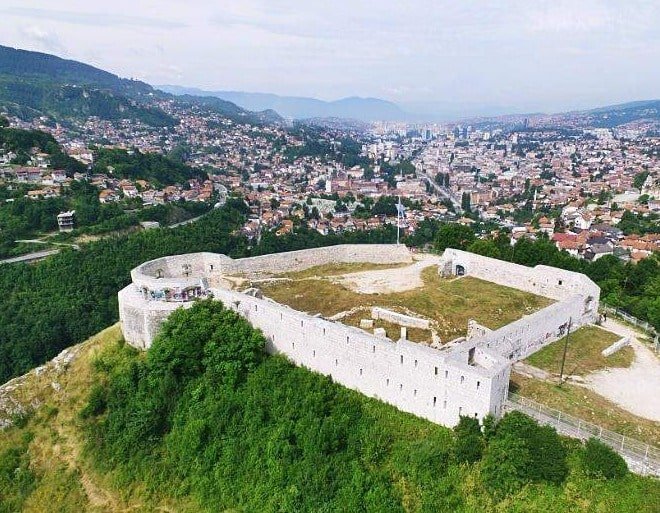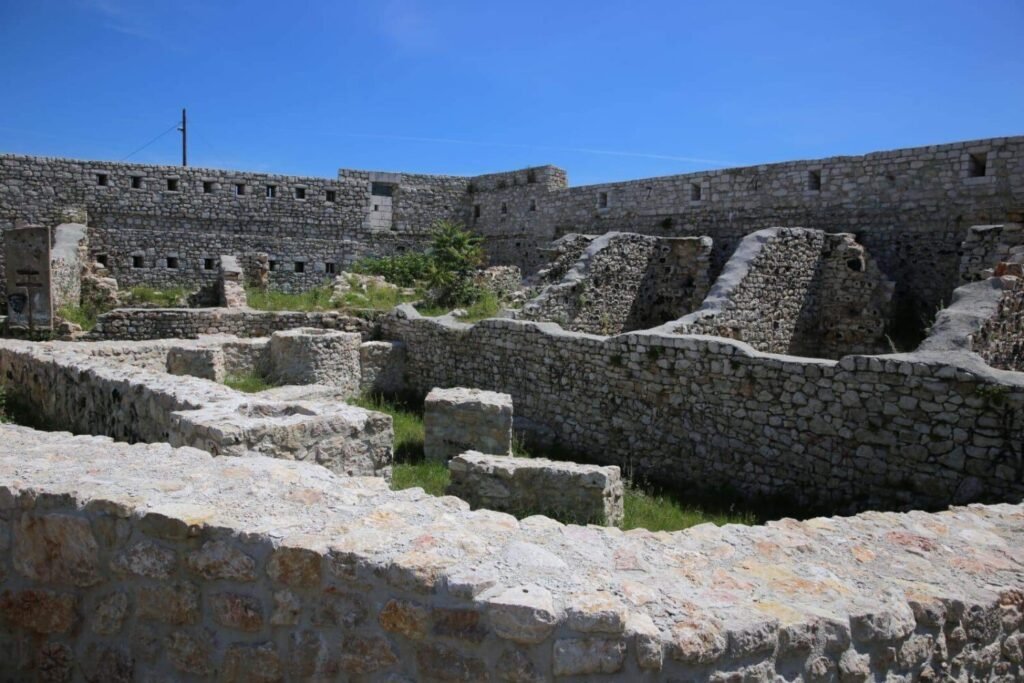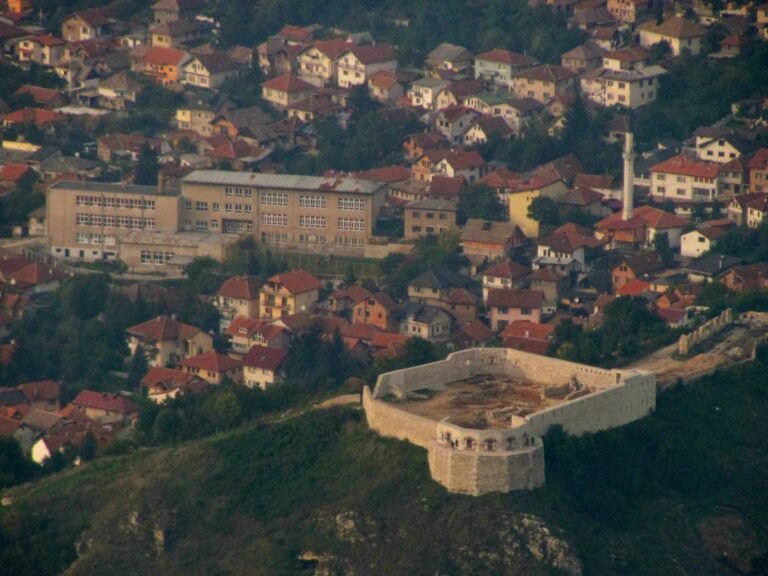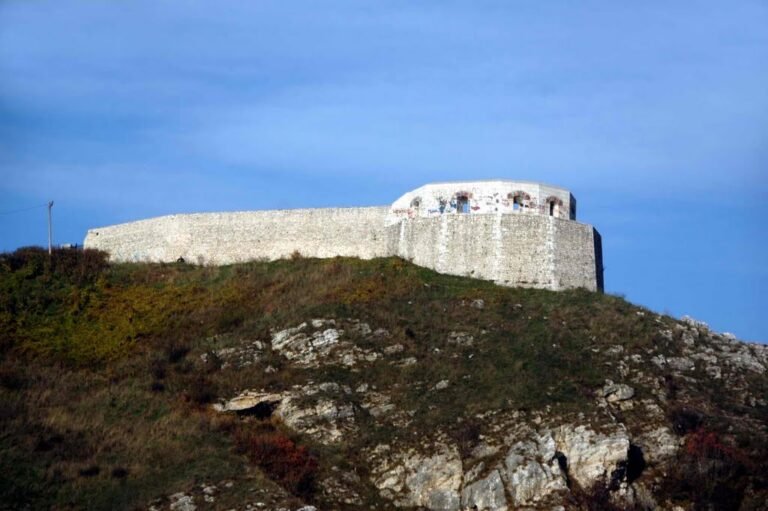If you stand on Baščaršija Square – the old part of Sarajevo – and look up at the hillsides above Sarajevo, you will see the White Fortress. In this post, you will read how Sarajevo got its name thanks to this fortress and learn something about its history.

In the Bosnian-Croatian-Serbian language, the name of this fortress is Bijela tabija.
The White Fortress is situated atop a hill that offers a beautiful view of Sarajevo and its surroundings and is one of the five fortifications that were built as part of the defensive wall around the old town of Vratnik.
History
The fortress dominates the eastern entrance to Sarajevo. Most likely is named after the white stone from which it was built. The fortress represents one of the most impressive and valuable buildings in the architectural heritage of this area.

Historians’ opinions about the time of the creation of the original fortress differ. According to some, the Fortress was built around 1550. This opinion is based on data provided by the travel writer Katarina Zeno. According to this opinion, that fortress was demolished during the construction of the town of Vratnica and a new fortress was built in its place.
Another opinion is that in the place of the White Fortress there was a fortress in the Middle Ages. The opinion is that was the usual type of medieval defensive fortification.

Reconstruction of the appearance of the medieval fortress on the site of the White Fortress was done by Alija Bejtić. This reconstruction was based on data provided by sources from the 17th century. It was a fortress with a rectangular base with four towers at the corners, a square base, and a heel above the entrance gate. This appearance of the city dates to the end of the 14th or the beginning of the 15th century.
With the establishment of permanent Ottoman rule in this area, in the middle of the 15th century, nothing significant changed in the appearance of the fortress. A crew of timarli was established in it and a mosque was built inside the fortress for their needs.
The upper part of the White Fortress in large stone blocks was created in the Austro-Hungarian period. The fortress was of great importance for the defense of the city during the attack of the Austrian prince Eugene of Savoy in the 17th century, and the Austro-Hungarian army in 1878.
About the name “Sarajevo”
The word “Sarajevo” is of Turkish origin. It is a compound of the word “Saray” which means a court, fortress, and “Ovasi” – field. Literally, Sarajevo would be “Field around the court/fortress” or “Court/fortress at the field”. Legend has it that this name referred to the White Fortress.
According to the legend, the Ottomans found the White Fortress when they conquered Sarajevo. For this reason, they named the city Saray Ovasi. Over time, the population adapted that name to the word Sarajevo.

Today, the White Fortress is a National Monument of Bosnia and Herzegovina and, given the incredible view, it is one of the most visited tourist attractions in Sarajevo.
If you want to visit the White Fortress, you can do so every week from Wednesday to Sunday from 10 a.m. to 6 p.m. The single price for a visit to visit White Fortress is 5 KM or 2.5 euros.
Visit our social media profiles as well:
